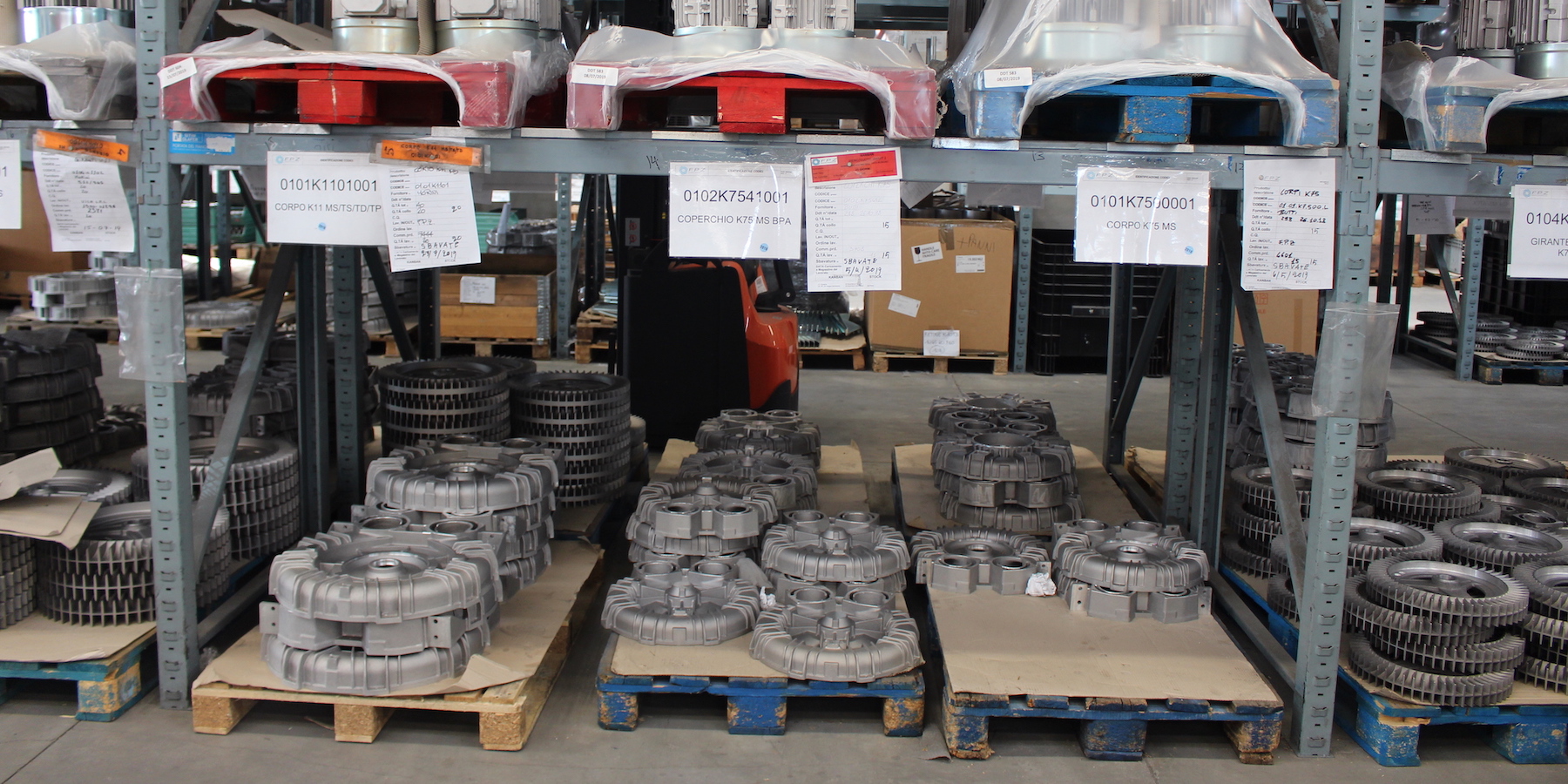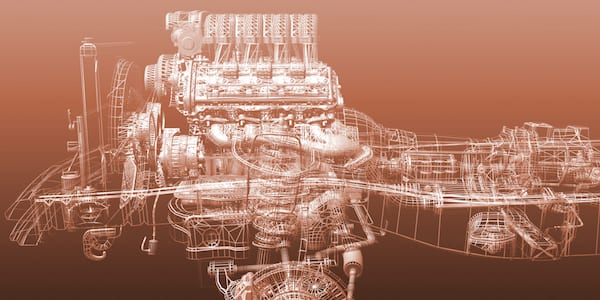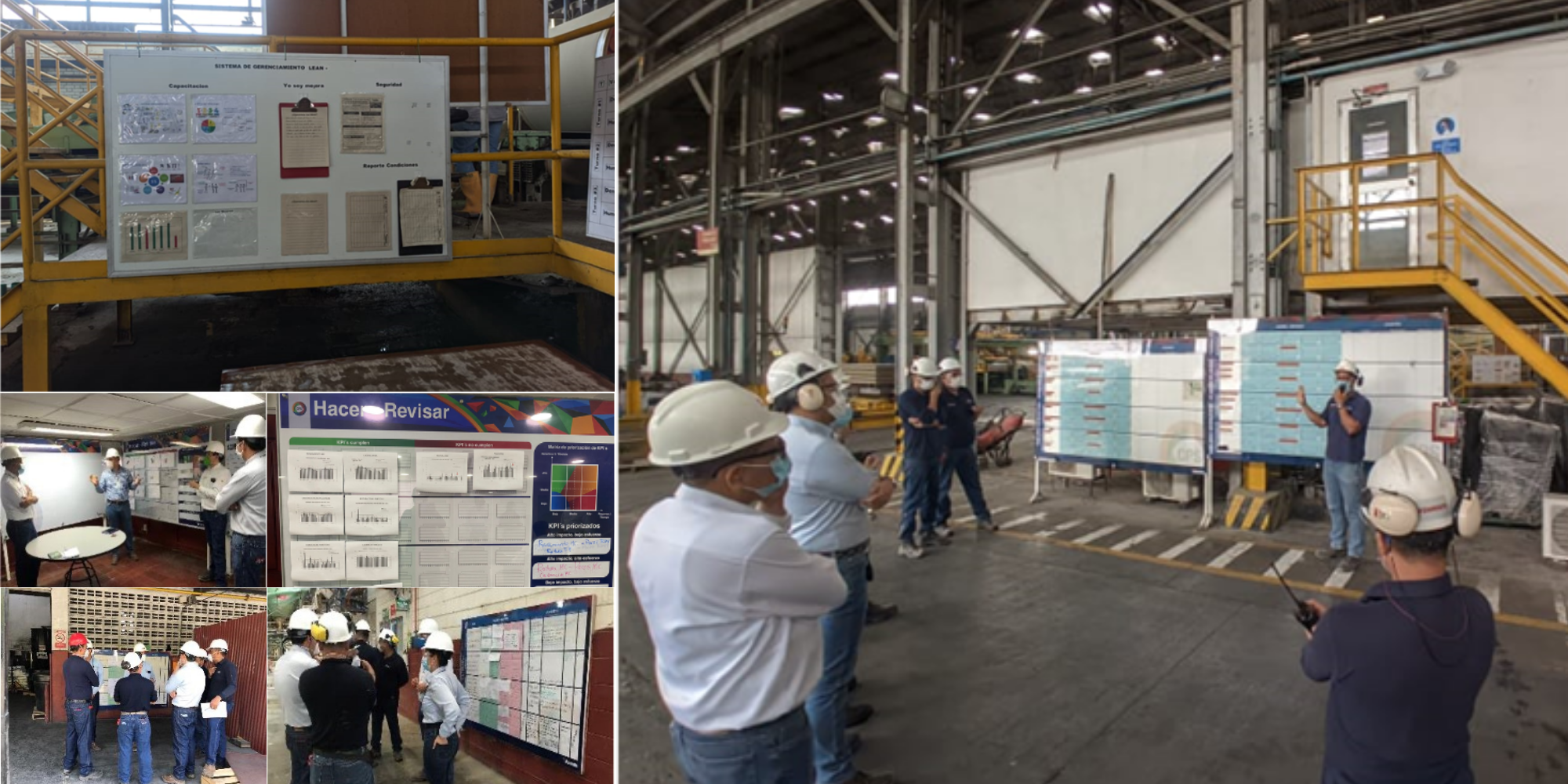
A journey of mind-blowing improvement
CASE STUDY – Seven years ago, this Italian manufacturer ran an experiment to reduce inventory in its warehouse. Today, lean thinking permeates every aspect of life at FPZ.
Words: Sergio Ferigo, CEO, FPZ Spa – Milan, Italy
My father founded FPZ back in 1975, together with two business partners. The company – a micro-enterprise with no overhead – designed and marketed a high-quality and affordable side-channel blower that proved a success in the Italian market. For years, FPZ grew, opening branches in France, Germany and the USA.
When my father passed away in 2002, the capital he and his partners left behind was extremely fragmented (there were a dozen shareholders, in a business with a €12-14 million turnover). At the end of 2007, together with a Private Equity fund, I took over all the shares of the company.
The investment of a Private Equity has always a time limit, and since I planned to buy their shares back, I immediately started to look for ways to improve the company’s cashflow. It was at that point that a friend of mine introduced me to lean thinking.
I had known Matteo Consagra for years (today, he works for the Istituto Lean Management and actively supports our lean transformation – see below) and, even though the idea of reducing inventory to improve service was pretty counterintuitive to me, I decided to trust him and take the leap towards lean.
The results were incredible: in just five months, we reduced the level of stock in our warehouse by 30% (from €3.5 million to €2.2 million). I was able to use the freed-up cash to complete the acquisition of 100% of FPZ shares.
That’s how our journey began. The first step was to optimize the processes in both the production and the assembly areas, relying on SMED and standardized work respectively. Some of the lines were shortened, and the layout of the factory changed. It was difficult at first, but eventually we got it. A huge obstacle to the creation of flow at FPZ is the fact that there is a road separating our production site from the assembly area, something we hope to change in the future. In the meantime, we are making the most of what we have: for example, we have recently started our first experiment with a production cell – we call it “Kauai”, the most beautiful of the Hawaiian Islands – where we have been able to create flow. Below, our Production Manager will tell you more about it.
Over the years, we have also taken lean out of the shop floor and brought it to other departments, from R&D to Marketing. As we understood the real meaning of value streams, we realized that departments are nothing but repositories of specialized knowledge and that they should only manage activities if it is at service of flow.
Of course, this is easier said than done. What you read in the literature about resistance to change is true: it is part of human nature. When you start talking about lean, you are alone and you are speaking a foreign (even alien) language that nobody understands. It can be very frustrating, but it’s important to persevere. Over time, a few people in FPZ got curious about lean (the legendary “early adopters”) and we hired a few more who were eager to learn about it. In general, people have been very open to the lean transformation – and I like to think it’s because of the trust we have been able to build over the years (our staff turnover is very low, because people at FPZ are respected and they feel engaged).
Of course, showing results has been instrumental to getting that buy-in. When we started to work with Kanban to better manage the flow of materials between production and assembly, for example, one of our operators was incredibly skeptical. A few months later, once the system was established and started to show results, we suggested the team go back to the old system and his response was a resounding “No”. It’s important that people understand how lean benefits them.
Once we got the support of our people, we started to develop their skills in earnest: to make a good product you need a good process, but you can’t have a good process without developing people. From a technical standpoint, we rely heavily on Training Within Industry (TWI) – these days we have Job Instructions, not SOPs – but we are also trying to teach people “social skills”. We even invite an organizational psychologist to come here periodically to listen to people’s problems and teach us how to better manage relationships within FPZ (for example, we learned the importance of giving and receiving feedback). To make up for the disconnect between the rather old Italian labor law and a modern managerial approach like lean thinking, we have developed an internal disciplinary code that regulates how we bring lean to different levels of the organization. Of course, we also train people in the lean tools and principles and teach them leadership skills: we don’t want them to blindly apply lean ideas; we want them to understand them fully.
DEFINING OUR STRATEGY
When I finally reacquired 100% of the FPZ shares, I felt like I had reached the top of my little mountain and had to figure out what was next for the business. That’s why, around five years ago, we introduced hoshin kanri.
When the moment came to bring lean to our strategic plans, not everybody was ready. We studied, we misunderstood a lot of things and worked hard to figure them out, we made mistakes and learned from them. At first, we tried to incorporate all the information about where we wanted to go into one strategic board and one tactical board. It was a disaster! Then, we tried with one strategic board and several tactical boards, but that only increased the level of confusion. We later tried a giant matrix (living on a A0 sheet) that we gradually simplified. Today, we have a number of tactical X matrices and one strategic X Matrix that gives us the direction we need to follow year after year. Along the way, we learned that the annual hoshin must exist within the context of a multi-year strategy that allows us to see if we are making progress towards the fulfilment of our vision. (We are currently trying to strengthen our ability to build a multi-year strategy using Kaplan and Norton’s strategy map.)
As obvious as it may sound, it was the definition of the vision and the mission of FPZ that ultimately allowed us to make progress towards understanding where we wanted to go as a company. For a long time, we thought that was as a time-consuming exercise that would only be useful for marketing purposes. We couldn’t have been more wrong: clearly stating your mission and vision is critical to motivate your people. Today, FPZ “strives to make life easier for fluid movement technology users”. At the end of the day, people don’t get excited about a blower or a dosing pump because it is pretty or because it comes in the color they like; our customers just want a hassle-free experience when they choose, buy, use or need to maintain one of our products. That’s what we strive to offer – peace of mind – and that’s what sets us apart from our competitors.
We aim to fulfill this vision by trying to put in place daily behaviors that improve our work continuously and provide more and more value to our customers. In this sense, lean is a way for us to make our growth sustainable.
Speaking of growth, we have recently acquired two companies that we consider strategic for our future: Arivent Italiana (a manufacturer of industrial fans) and Doseuro (a maker of dosing pumps). We recognize the importance of creating a consistent message across the group (we are also expanding internationally, beyond our sales offices in UK, Spain, France, Germany, Austry, Mexico and the USA, and a joint-venture in Turkey), which is why we have tasked our former Operations Manager and Sales Manager to bring the lean culture to the two businesses, of which they are now the two CEOs. We picked companies that shared our principles and work ethics (and they picked us because they believe that FPZ will continue the work they have started). Indeed, when we made mistakes in the first acquisition, we could count on the support of the previous owner.
We have a long way to go on our learn journey, but we are excited to see what’s coming.
LEAN MANUFACTURING AT FPZ
by Mauro Mantovanelli, Production Manager

When it comes to lean in manufacturing, our plant is quite advanced. The elimination of waste is systematic here (we just cut €60,000 worth of scrap in the past three years), as is the work to improve our processes.
The different tools and techniques we use, which exist within a lean system, strengthen each other. An example of this is our heijunka board for production scheduling, which immediately tells operators what they need to work on next. This, of course, limits the downtime of machines, especially when coupled with the Kanban system we rely upon to ensure the right materials and parts are made available to the operator when and where they need them. At FPZ, Kanban is also used to deal with our suppliers. Visual management is part and parcel to our work.
Our most interesting lean project is perhaps the production cell, which we launched in December 2018: in just 35 square meters (380 square feet), we can now carry out the entire production work for two models in our range. Components come in on one side and get out in the form of a final product 26 minutes later – quality-checked, packaged and labeled.
To accommodate the cell, we worked for one year to completely transform the site: we changed the layout, built new doors, moved machines and steps in the process, and we repainted the floor. It’s all been worth it, because this system makes us faster and more flexible and ensures problems are spotted immediately. Within minutes of starting production, deviation can be identified and corrected (rather than turning into rework that takes place weeks after production, when the defect is finally noticed at the assembly stage).
We have trained two people to work in the production cell: one is from assembly, the other from the production floor. We asked them to do each other’s work for two months – one learned to use the lathe, the other one learned about the assembly work. This was critical, since the cell works with one operator over two shifts.

We know that completing the entire process from start to finish, rather than just a step of the process, can be a difficult change for our operators. It is not surprising, therefore, that when we started there was quite a bit of perplexity. They couldn’t wrap their head around the new system. At first, they thought it was piece-rate work! Previously, there was a lot of idle time, whereas in the cell the time and machines are used more efficiently. Now that the operators have seen their work is less alienating and that they are actually responsible for it, they have started to change their minds. They feel enriched now, and they have a better understanding of their colleague’s job and conscious of how their own work impacts it.
The effect of the production cell on our company couldn’t be more positive: using it means that we will be able to eventually eliminate all the work-in-progress, because the operators will be completing the whole process right within the cell. A great example of waste elimination – no more moving pallets to warehouses, no more waiting, no more inventory.
Our plan is to implement the production cells across the factory, with the idea of using them to produce all our machines within three year. In fact, part of my personal A3 focuses on the development of the other cells and the upskilling of more operators. People, in the meantime, are asking when we are going to introduce more cells – which is very promising indeed.
THE COACH COMMENTS
by Matteo Consagra, Lean Coach, Istituto Lean Management

I started working with FPZ in production around seven years ago. Since then, I have come here every week, be it for just one hour or a whole day. Over this period of time, the lean transformation has moved out of the production floor and spread to other departments and activities. Lean was even used to define the company’s strategic objectives.
Seven years ago, when we ran that first experiment in the warehouse (which led to a dramatic reduction in the level of stock and to Sergio being able to regain control of the business), I didn’t necessarily expect we would experience such an incredible cultural transformation at FPZ. I now realize that those early results created trust across the organization – trust in leadership, trust in the company, and trust in lean thinking. From there, the journey continued with more and more activities taking place at different levels of the company (and with PDCA always as a means to reaching the North Star and one-piece-flow everywhere).
This is a company that pushes the envelope and is not afraid of getting its hands dirty with their lean improvements. Over the past three years, FPZ has turned into an incubator, a safe area for experimentation. This makes it an incredible partner-in-learning for Istituto Lean Management. Together, we are even teaching lean thinking to university students: the institute provides the theory, FPZ the practical experience. And everyone benefits from this: the student learns a lot, the company gets support in its lean work, and the institute gets the opportunity to develop the next generation of lean coaches (at a time when finding good ones is increasingly difficult).
Sergio’s commitment as an entrepreneur and CEO is commendable. He is not afraid of questioning himself as a leader and he challenges others to always do better, while never forgetting the strategic direction set out five years ago through the hoshin work we did together. His commitment allows lean to spread at great speed, and the results are there to prove this is the right approach for FPZ.
THE AUTHOR

Read more


FEATURE – Construction is rife with waste, and yet lean is not widely adopted in the industry. The authors highlight how lean could benefit the sector, emphasizing the importance of developing problem-solving capabilities.


INTERVIEW - We caught up with LEI’s Senior Advisor, Jim Morgan after his plenary talk at the Lean Summit in São Paulo last month and got him to answer a few questions about product development and lean management.


CASE STUDY – For the past year, Elementia Materiales, a producer of materials for the construction industry, has begun a lean journey that’s already brought impressive quality results.


COLUMN - In the second article of our series, the director of an elementary school in Budapest tells us how using PDCA can help to improve education and provide students with the right skills.

